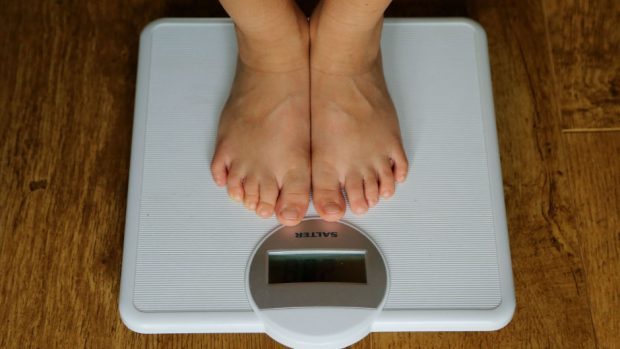Scotland’s obesity epidemic could be damaging the eyesight of young adults, according to a major new study.
Research undertaken by NHS Fife and the University of St Andrews looked at all patients presenting to NHS Fife over a 12-month period with a condition called Idiopathic Intracranial Hypertension (IIH).
The disease typically affects young overweight females.
Headaches are the most common symptom and are caused by high pressure within the brain, which can damage the nerves of sight leading to a small number of patients developing irreversible sight loss.
Dr Andrew Blaikie, Senior Lecturer in the School of Medicine at the University of St Andrews and Consultant Ophthalmologist with NHS Fife, oversaw the project.
He said: “Scotland has one of the worst records for obesity in the developed world and the prevalence of obesity in Fife is higher than the Scottish average.
“We are in the midst of an obesity epidemic and if this continues we will see IIH becoming more common, increasing the risk of a small but significant number of young people losing vision.”
Dr Colin Goudie, Ophthalmology Registrar at the Princess Alexandra Eye Pavilion, who conducted the research, added: “The incidence of IIH in Fife was significantly higher than previous estimates and we believe this is due to the high levels of obesity in the region.
“We found that the incidence of IIH in Fife was between two and six times higher than previously reported from other studies performed in similarly developed nations.”
“In 2017, 65% of the adult population in Scotland were recorded as being overweight (BMI >25) with 29% being clinically obese (BMI >30).
“The major risk factor for developing IIH is being overweight.
“No one of normal health weight presented with the condition, with all those affected being female except one.
Dr Blaikie added: “As being overweight is the cause of the disease, the primary treatment is to lose weight and achieve a normal BMI.
“This can be augmented with medicines and sometimes surgery to prevent any long-term damage to sight and improve symptoms of headache.
“However, a group of patients exist who can still develop rapidly progressive and permanent vision loss despite prompt treatment.”
The researchers’ paper has been published in the Scottish Medical Journal.










